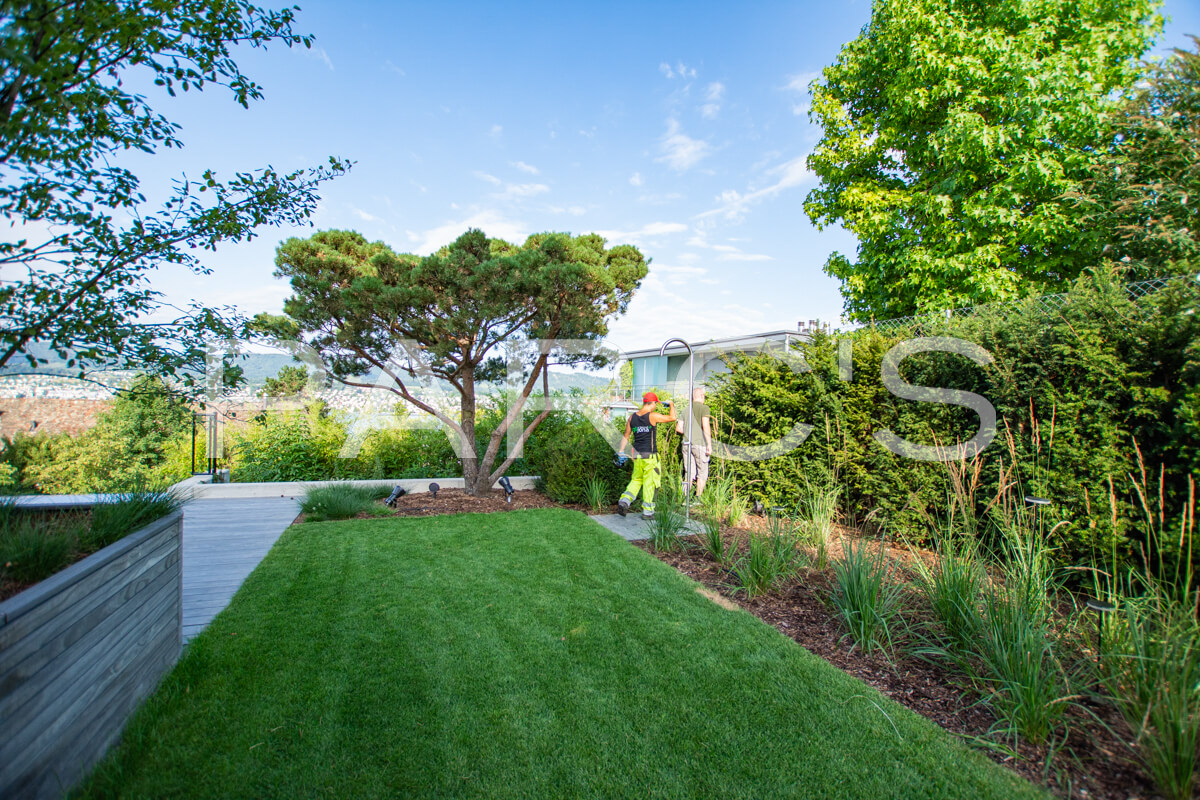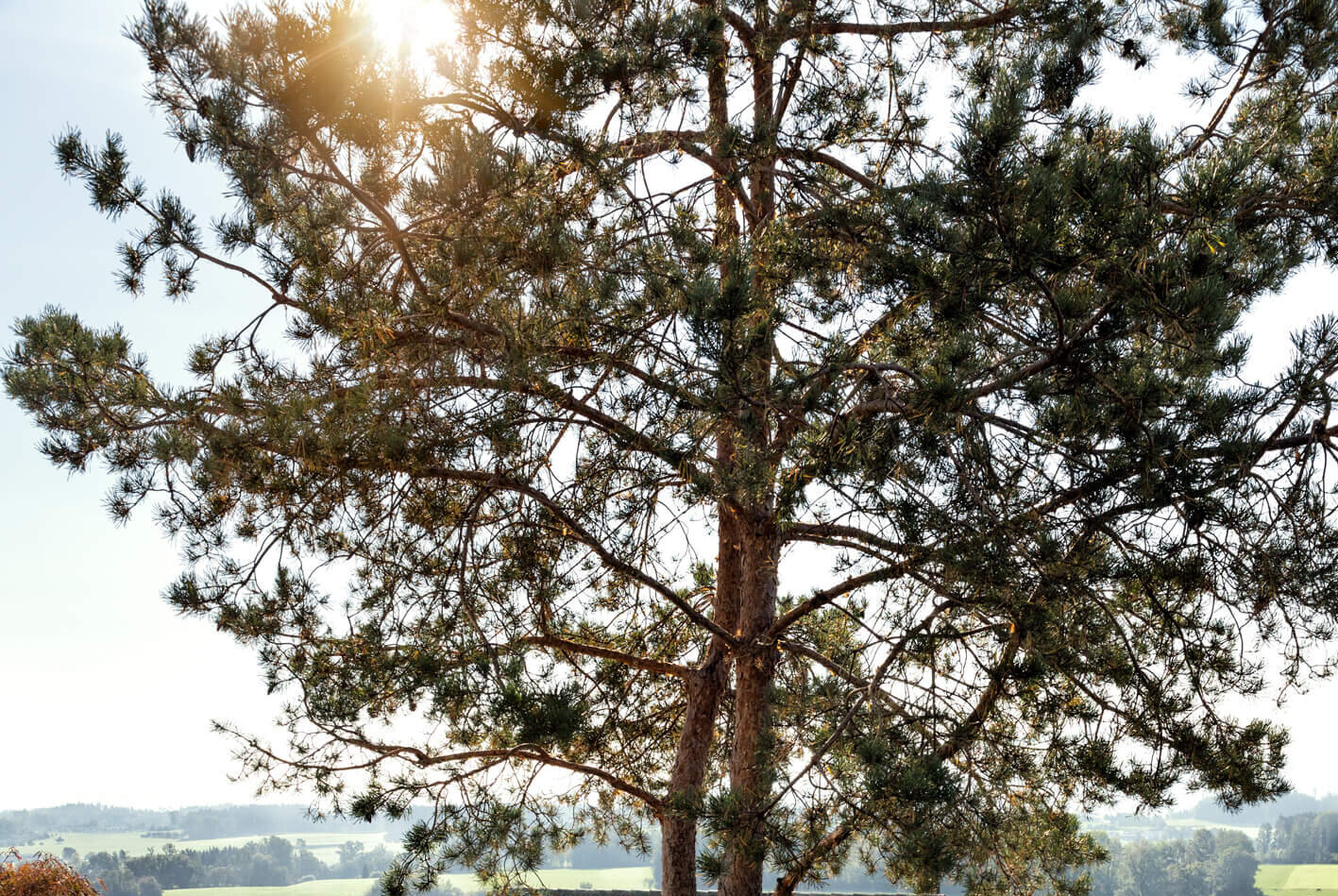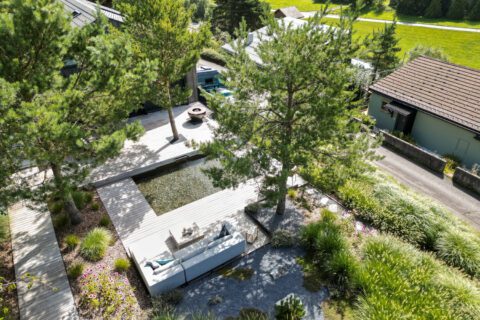Plant profile Pinus sylvestris
Botanical Name: Pinus sylvestris
German Name : Scots Pine
Family: pinefamily (Pinaceae)
Flowers: yellow and red flowers, brown cones
Cone Maturity : October
Foliage: evergreen coniferous.
Growth habit: conical, umbrella-shaped
Origin: Europe
Pinus sylvestris, also called pine, is one of the low-maintenance conifers. It is hardy and does not require regular watering. This is because the Scots pine does not like waterlogging, otherwise the needles may fall off. The pine likes a permeable, dry and slightly acidic soil.
Scots pines belong to the 2-needled pines. The pairs of needles sit on the branch for 3 to 4 years and reach a length of 2.5 to 7 cm. The coloration varies from slightly reddish, yellowish to green twigs depending on the location. However, the female and male flowers differ in color, with the female slightly reddish and the male more yellow.
Pine trees grow up to 35m high, on good sites even up to 40m. When the Scots pine is fully grown, they are often asymmetrical and irregularly shaped, conical or umbrella-shaped at the top.
Use of the pine
The pine is one of the most sought-after trees, as it accounts for a large proportion of the forest area in Europe. The wood of the pine is used in industry as a raw material for paper production. It is also popular in garden design. The variety Pinus sylvestris "Glauca" with a height of 10-15 meters is very suitable for a larger outdoor living room, but it needs enough space. If something lower is preferred, the flat forms of the dwarf Scots pine are suitable. These can be planted in small beds or larger troughs.
The pine is perfect for a sunny to semi-shady place in the garden. Otherwise, it has no great demands and is therefore very easy to care for - ideal to have a beautiful eye-catcher in the garden with little effort.
PARC'S references with Pinus sylvestris

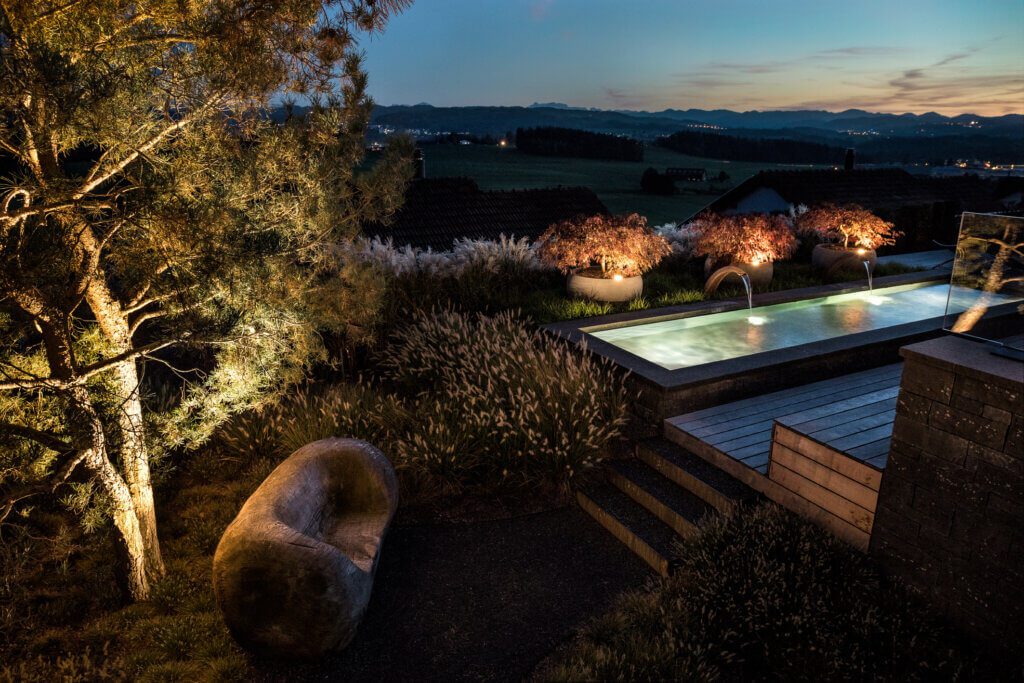
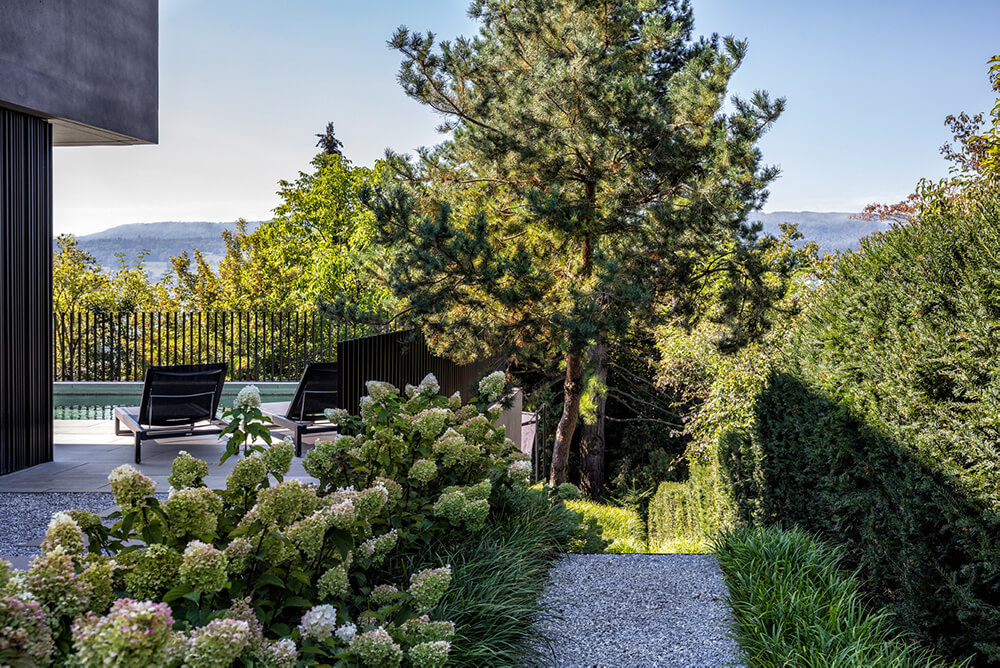
You are also thinking about redesigning your garden? We will be happy to advise you personally and without obligation.
Contact us!
Browse through our latest references:






